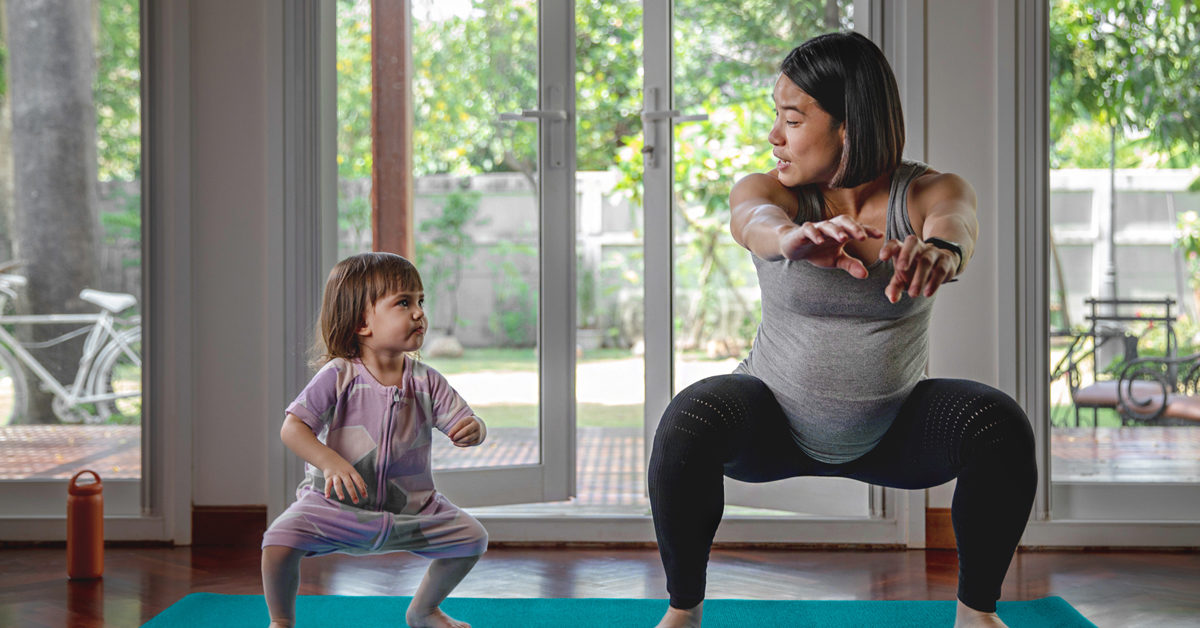Pregnancy Workouts Routine: Before you begin your pregnancy workout routine, let’s review some guidelines to ensure your workout is as safe as it is productive. First, let’s make sure you have the right equipment.
Types of equipment that you will need for your Pregnancy workouts Routine:
- Dumbbells weighing three, five, eight, or ten pounds each
- Medicine ball
- Exercise bands
- Physioball
Optional Equipment
- Exercise mat
- Workout bench or chair
- Heart rate monitor

If you can, invest in a heart rate monitor. It is essential to monitor your heart rate during every workout. A heart rate monitor is a quick, easy, and effective way to monitor the intensity and duration of your pregnancy workouts Routine.
Many brands are available and can be found at most sporting goods stores.
- LETSCOM Fitness Tracker HR
- Polar H10 Heart Rate Monitor
- Wahoo TICKR X Heart Rate Monitor
- Lintelek Fitness Tracker, Heart Rate Monitor
Choosing the right heart rate monitor is a personal choice; after extra options and prices are considered. You can also check your heart rate periodically by placing your index and middle fingers on your neck to find your pulse during your pregnancy workouts, Routine.
Watch the clock for ten seconds and count the number of beats in that ten seconds. Then multiply that number by six.
One more way to monitor your intensity is the “two-sentence” talk test. You should be able to say at least two sentences without being out of breath. Although effective, this method is the least accurate of the three.
Pregnancy Workouts Routine General Recommendation
We emphasize slow, controlled movement for every exercise. This will help you target the muscle group you are working on.
It will also help you to prevent or lessen the risk of injury. Maintain a regular workout schedule of two to four times a week.
Avoid overhead exercises with heavy weights and try to work out with a buddy or trainer to improve form.
- Be sure you understand each exercise before you attempt it.
- Hire a fitness professional if you can afford one. (Research the individual’s references and qualifications.)
- Perform a five-minute warm-up and cooldown. Hold each stretch for twenty to thirty seconds.
- Wear comfortable clothing and shoes and a well-fitting bra for support.
Side Effects of Pregnancy That Can Affect Your Workouts
As you may well know, along with pregnancy come changes in your body and daily activity that will affect your fitness routine. First and foremost is your energy level.
This is a significant issue during your first trimester. Due to morning sickness (another side effect) and your body working overtime, you will be more tired than usual. Your energy level will continue to be an issue for some time after the baby comes (all those sleepless nights!).
Just keep your goals in mind and remember: a workout session will only make you feel better!
Later in your pregnancy, you may find it more challenging to get through your workouts because of your increased weight and protruding belly.
This is where your network of family and friends will be extra essential to offer you encouragement and motivation.
Preventing Injury During Your Pregnancy Exercise

You will use small/light weights with higher repetitions for your workout. If you are already on a fitness routine, you can probably maintain the consequences you are currently using.
For advanced fitness levels, it is recommended that you use eight twelve-pound weights or lighter for upper-body exercises and under thirty pounds for lower-body exercises.
please Read:8 SUPER EASY DELIVERY EXERCISES PREGNANCY FOR NEW MOMS
If you are new to exercise, you will probably want to use three- to eight-pound weights for upper-body exercises and around twenty pounds for lower-body activities.
Your Obstetrician may be able to give you further guidelines on the amount of weight you should be lifting according to your health level.
This is not the time to increase your fitness routine. Instead, this is a time to establish or maintain a fitness routine.
It is always better to be conservative and make slow adjustments instead of overdoing it, causing injury, and being unable to work out.
Precautions To Take During Your Workouts routine.
- Monitor your heart rate and intensity level closely.
- Do not overexert yourself. Joint injury is an issue due to the production of estrogen and relaxin. However, joint injury is highly unlikely if the exercises are done correctly with the right size of weights and the correct form.
- Stay hydrated by drinking plenty of water. Just drink water before, during, and after your workouts.
- Early labor is a potential complication of dehydration. read “NUTRITION FOR PREGNANCY: GUIDELINES & ADVICE.”
- Keep movements slow and controlled.
- Do not bear down or hold your breath during the execution of an exercise (See Valsalva maneuver in the glossary).
- Diastasis is the separation of the abdominal muscles. A slight separation is normal during pregnancy workouts routine due to hormonal changes in any woman, but it can be worsened by already weak abdominal muscles or overtraining.
A diagram is shown that will help you understand this condition.
If you feel this has happened, see your doctor immediately. They will guide you further on care.
Warning Signs To Stop Exercising
- Sharp pain in the abdominal area
- Vaginal bleeding
- Dizziness
- Excessive fatigue
- Increase in any vaginal fluid
- Swelling, pain, and redness in calf or leg
- Persistent headaches, visual disturbances
- Persistent contractions n Severe shortness of breath
- Chest pain n Decreased fetal movement
- Muscle weakness
Preterm labor If these symptoms occur, stop the exercise and contact your physician immediately.
Contraindications To Exercise During Pregnancy workouts routine
- Risk factors for preterm labor
- Vaginal bleeding Premature rupture of membranes
- For some forms of heart disease n Obstetrician does not give release
- Restrictive lung disease
- Multiple gestations
- Placenta previa after twenty-six weeks gestation
- Premature labor during the current pregnancy
- Pre-eclampsia/Pregnancy-induced hypertension





1 thought on “Pregnancy Workouts Routine & Professional Guidelines”
Comments are closed.